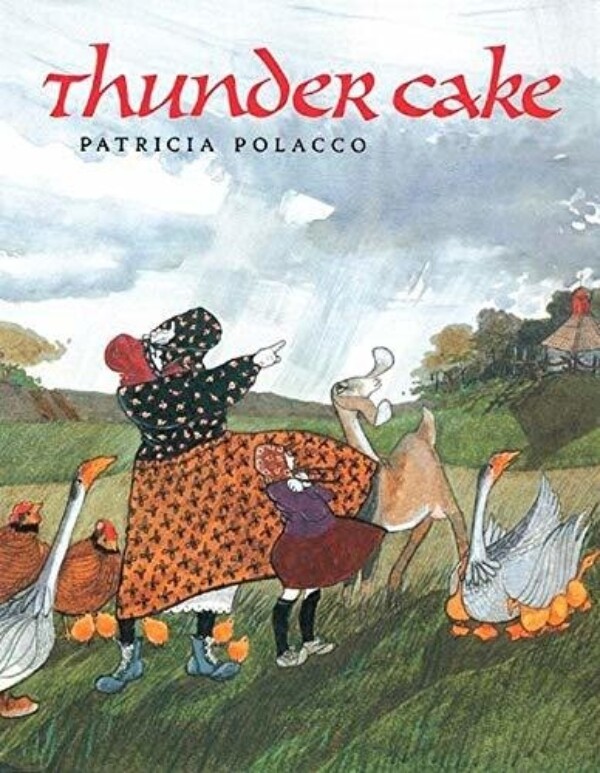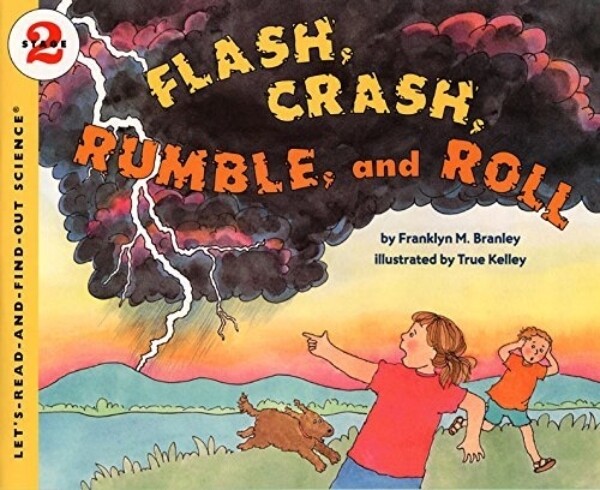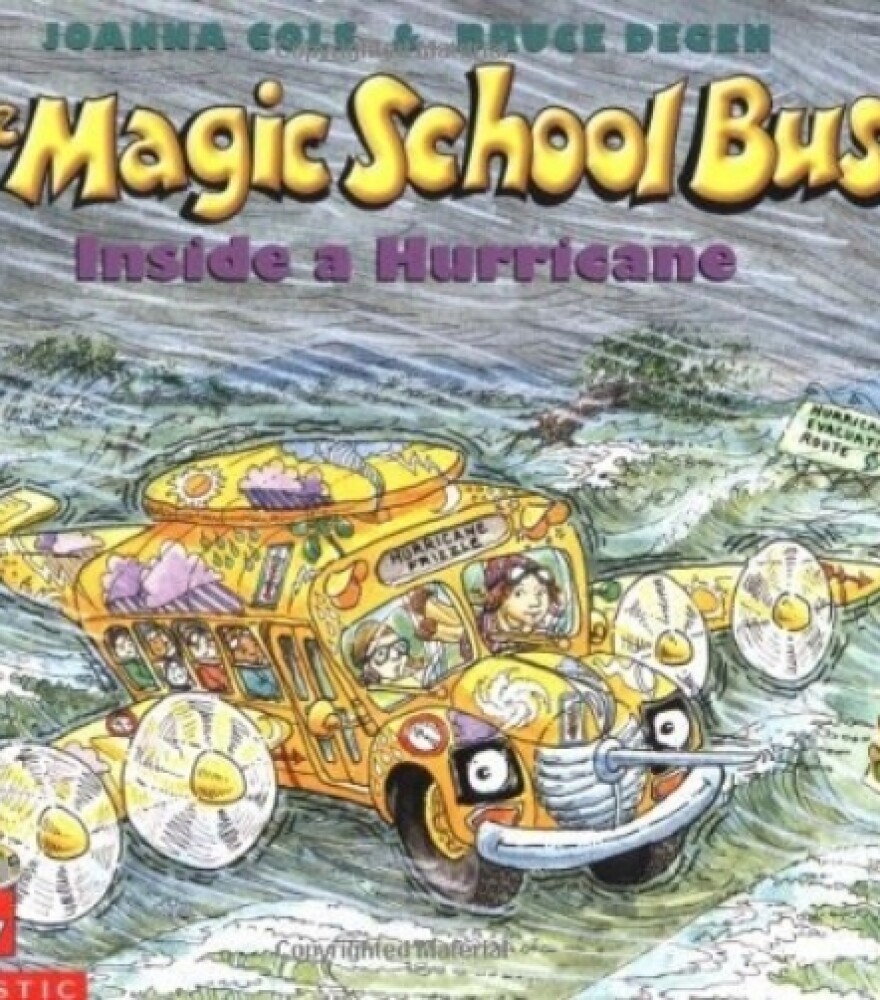Nature always has something awe-inducing to offer and that includes weather of all kinds. Sometimes our weather comes with a lot of noise and excitement and sometimes it blankets the earth with frosty beauty. It can also be extreme, potentially destructive, and very reasonably something that kids might be anxious about.
You can ease fears by helping kids understand what’s happening and how to stay safe. Sharing books is a great way to learn the science behind the weather and explore how to best weather any storm together. Kids who get a charge out of a flash of lightning or roll of thunder will also benefit from books about weather and weather emergencies. Whether they are concerned about or cool with wild weather, kids are always curious! Reading together and talking about what you’ve read can answer kids’ questions, calm concerns, and help everyone get prepared, whatever the weather.
Here are three things you can do to use books and conversation to help kids get weather ready:
Set an example
Your plans to cut the grass or go to an outdoor concert may get thwarted by rain, but don’t let your kids hear you lay the brunt of your disappointment on “bad weather.” Kids will pick up on your feelings about the weather, make them their own, and avoid going out when it rains. Books can help your kids — and you — make positive associations with the weather. The irresistible Rain or One Hot Summer Day demonstrate how a good attitude can make all the difference.
You can also model strategies that help deal with anxious feelings about the weather, such as breathing exercises. Or, after a reading of The Storm, launch conversations about how to chase away fears and uncertainty with positive thoughts. Be a science role model when you turn what you learn from titles such as Flash, Crash, Rumble, and Roll into a regular storm routine of counting and calculating storm distance as you measure the time between hearing thunder and seeing lightning.
Use fiction and nonfiction
Some kids love to focus on facts. Others love a made-up story. But when you can help them combine and connect to both nonfiction and fiction, you engage and expose them to different types of text while also boosting comprehension and building their background knowledge, vocabulary, critical thinking skills, curiosity, and imagination. Could it ever really be cloudy with a chance of meatballs? Find out when you read Cloudy with a Chance of Meatballs along with The Cloud Book.
Follow up your reading with activities that offer opportunities for kids to take what they’ve learned and own it. For example, grab a big metal spoon after you’ve shared both Cloudy with a Chance of Meatballs and The Cloud Book. Ask kids what will happen if they breathe on the back of the spoon. Have them do it and see if they create their own tiny cloud of water vapor! Talk about what you’ve read about what happens when warm, moist air and cool air come together. They just made a cloud!
Make a plan
Everyone feels more comfortable and secure when they have a good understanding of what’s happening and know that precautions and a plan are in place to keep everyone safe. Making a plan together can help relieve kids’ tension and uncertainty around severe weather events. Start the planning conversation with titles such as Ready, Set…Wait! What Animals Do Before a Hurricane to help kids better understand how planning can help keep you safe. No matter where you live, you should make a plan in case disaster strikes. Sesame Street has some excellent tools that can help you include young children in creating an emergency plan.
You can also make a weather plan, or start “weather traditions” to support kids who are having trouble with any type of weather. You might designate a special place for spending a storm together, put together a family “thunder band” to play music to drown out the storm, and, in case the power goes out, stage a shadow play or a flashlight reading of a favorite title.
Knowledge is power and can help your child feel more in control and less afraid. Remember though that when sharing nonfiction titles, you don’t have to read all the information. Pre-read and determine what’s most appropriate to share, then try read-alouds of these pairings of fiction and nonfiction to empower your own little force of nature.
Loren Long

Though the likeable tractor Otis and the other farm animals have had no luck befriending the bullying bull, Otis risks his own safety to rescue the bull when the sky turns dark and stormy. The drama and tension in this fast-paced book will have readers whirling! Slow things down and ask about what the characters are doing to keep themselves safe. After reading, open a conversation about watching for signs of tornado danger and knowing what to do if a tornado watch or warning is issued.
Gail Gibbons

In this exciting nonfiction read, Gail Gibbons gives the straightforward facts about how and where tornadoes form and what you should do when a tornado approaches. In both the text and illustrations, the book discusses the damage that a tornado causes, including related deaths, so be prepared for sensitive readers to express their concerns.
Patricia Polacco

When a big storm approaches, a grandmother distracts her granddaughter from the scary sound of thunder by getting her to help gather all the ingredients to make Thunder Cake. By the time the cake is on the table, the little girl is no longer afraid. This read aloud title calls for sound effects. Encourage readers to join in! After reading, talk about what kinds of activities your family could do together to ride out a storm.
Flash, Crash, Rumble, and Roll
Franklyn M. Branley (Author) and True Kelley (Illustrator)

Read this to explain all the scientific basics of a thunderstorm and offer safety steps to follow when lightning is flashing. The clear explanations in this title will answer kids’ questions and help address any fears, but do note that details include facts about lightning deaths.
David Wiesner

Brothers George and David find a tree downed by a hurricane to be a very happy accident as they spend several joyous days using it for all sorts of creative play. With its lush watercolor illustrations, this title gives you a chance to talk with kids about two powerful forces — nature and imagination.
The Magic School Bus Inside a Hurricane
Joanna Cole (Author) and Bruce Degen (Illustrator)

A field trip to the weather station turns wild when the bus flies through the clouds and Ms. Frizzle’s class experiences both a tornado and a hurricane. Pour over the fun facts the class discovers about weather and maybe even get inspired to make your own notes about the weather.







